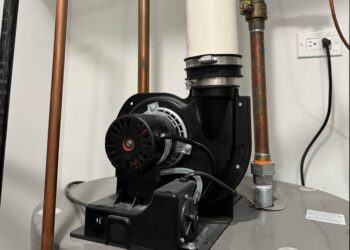Thyroid nodules are small lumps that form within the thyroid gland, located in the neck. While most thyroid nodules are harmless, some require further evaluation to determine their nature. One common diagnostic procedure is a thyroid nodule biopsy. Here is more information on this biopsy procedure, who might need to have one done, and what you can expect before, during, and after the biopsy:
What Is a Thyroid Nodule Biopsy?
A thyroid nodule biopsy is a diagnostic procedure that involves removing a small sample of cells or tissue from a thyroid nodule for further analysis. This test helps physicians determine whether a nodule is benign (non-cancerous) or malignant (cancerous). In most cases, the biopsy is guided by ultrasound to aid precision.
The results of a biopsy can assist in identifying the specific characteristics of the nodule. They may reveal whether the nodule poses any health concerns and guide decisions about treatment or monitoring. A healthcare professional can help determine if this procedure is right for you.
Who Might Need This Biopsy?
A thyroid nodule biopsy is generally recommended for individuals with nodules that raise concerns based on size, shape, or ultrasound findings. Some patients may have nodules that are larger than a certain size or exhibit irregular features detected during imaging tests. Patients who have a personal or family history of thyroid or other cancers may be more likely to undergo this procedure. Physicians often conduct a thorough evaluation of symptoms, medical history, physical exams, and imaging results before recommending a biopsy.
What Does the Process Involve?
The biopsy process typically begins with a consultation. During this discussion, a healthcare provider may explain the procedure and answer any questions patients might have. On the day of the biopsy, the patients’ necks are cleansed, a local anesthetic is applied, and an ultrasound device is used to locate the nodule for sampling.
A fine needle is often used to collect the sample, a procedure referred to as fine needle aspiration (FNA). The needle collects a small sample of cells, which is sent to a laboratory for evaluation. The entire procedure can usually be completed in 30 minutes or less.
What Happens After the Biopsy?
Following the procedure, most patients can resume regular activities relatively quickly. Mild soreness or swelling at the site may occur, but this typically resolves within a few days. A healthcare provider may offer guidance on managing discomfort.
Once the results are available, a follow-up appointment may be conducted to discuss the findings. Based on the analysis, the next steps might include continued monitoring, additional diagnostic testing, or treatment planning if necessary. Patients are encouraged to schedule any recommended follow-ups promptly to foster appropriate care.
Seek Professional Guidance Today
A thyroid nodule biopsy is a straightforward diagnostic tool that provides valuable insights into the nature of thyroid nodules. By helping healthcare providers assess nodules with precision, this procedure supports informed decision-making and personalized care plans. If you’re evaluating or have been advised to undergo this type of biopsy, consult your healthcare provider for tailored guidance and support. Rely on professional expertise to address questions and concerns specific to your situation.





